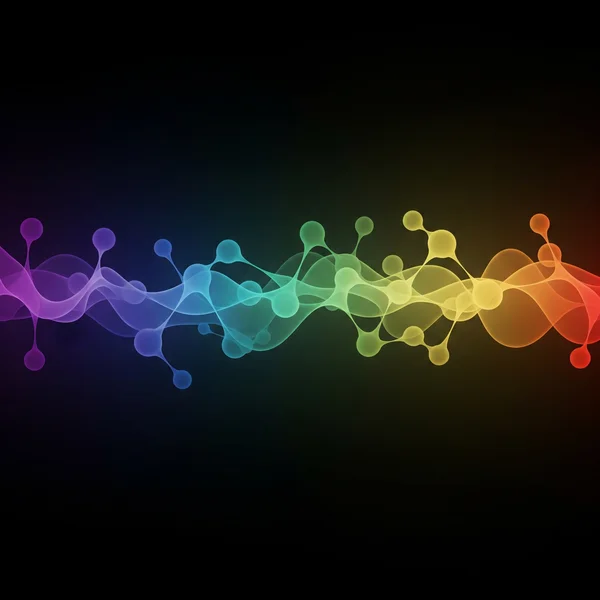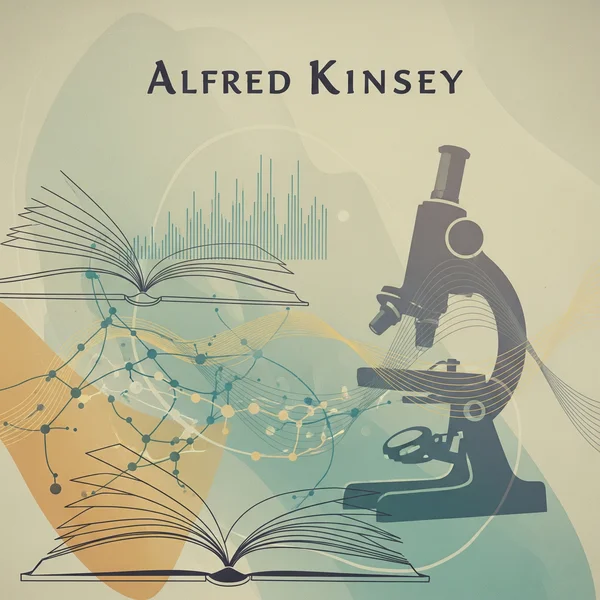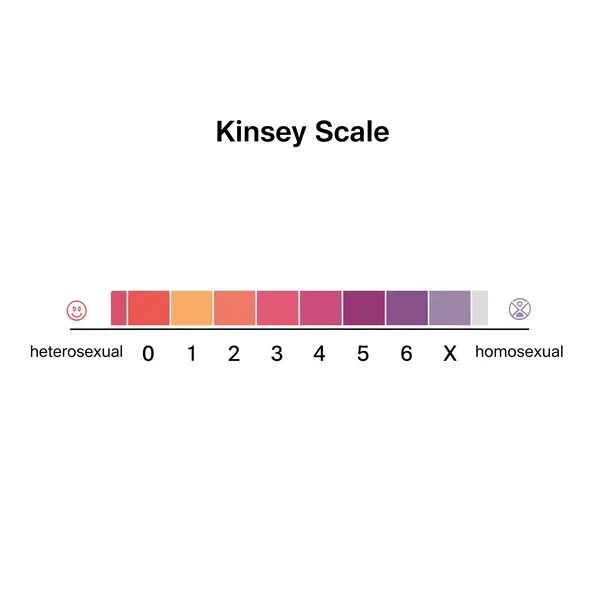What is the Kinsey Scale? A Full Guide
Have you ever wondered about the complexities of human attraction and sexual orientation beyond simple labels? What is the Kinsey Scale, and how can it help us understand this fascinating aspect of human experience? The Kinsey Scale is a renowned tool designed to represent the spectrum of human sexuality. For many, understanding their own position on this spectrum is a key part of self-discovery. If you're curious to learn more about this influential scale and perhaps gain a deeper understanding of yourself, you're in the right place. You can even explore your own Kinsey Scale score by taking our test.
The Origins: Who Was Alfred Kinsey and Why Did He Create the Scale?
The Kinsey Scale, also known as the Heterosexual-Homosexual Rating Scale, emerged from the groundbreaking research of Dr. Alfred Kinsey and his colleagues in the mid-20th century. It challenged conventional, binary views of sexuality by proposing that sexual orientation exists on a continuum. This guide will delve into the origins of the scale, explain its structure, and discuss its enduring significance in fostering a more nuanced understanding of sexual orientation and the diversity of sexuality. Understanding what is the Kinsey Scale involves appreciating its historical context and its revolutionary approach to a topic often shrouded in misconception.

What did Alfred Kinsey study that led to this groundbreaking scale? Alfred Kinsey, initially an entomologist, turned his scientific rigor to the study of human sexual behavior, a field largely unexplored and fraught with societal taboos at the time. His work was driven by a desire to understand human sexuality as it actually existed, rather than how it was presumed to be.

The Man Behind the Research: Alfred Kinsey's Background
Dr. Alfred Kinsey was a biologist at Indiana University. His meticulous research methods, honed in his studies of gall wasps, were applied to collecting extensive sexual histories from thousands of individuals. This empirical approach was radical for its time and formed the basis of his influential publications, often referred to as the Kinsey Reports. This research highlighted the vast diversity of sexuality.
Challenging Norms: The Context of Sexuality in the Mid-20th Century
In the 1940s and 1950s, societal views on sexuality were predominantly rigid and often judgmental. There was little public or scientific acknowledgment of the spectrum of sexual experiences and attractions. Kinsey's work directly challenged these norms by presenting data that showed a much wider range of sexual behaviors and orientations than was commonly accepted. This work was crucial for a better understanding sexuality.
The Purpose of the Kinsey Reports and the Scale
The primary purpose of the Kinsey Reports ("Sexual Behavior in the Human Male" in 1948 and "Sexual Behavior in the Human Female" in 1953) was to provide objective, scientific data on human sexuality. The Kinsey Scale was developed as a tool within these reports to classify individuals based on their heterosexual and homosexual experiences and responses at a given time, moving beyond simple "heterosexual" or "homosexual" labels. This helped in understanding sexuality on a broader sexuality spectrum. If you're interested in the historical impact, learning about the Kinsey Scale's origins can be very insightful.
Decoding the 7 Points: What Each Kinsey Scale Score Means
How does the Kinsey scale work? The Kinsey Scale is a 7-point scale, ranging from 0 to 6, with an additional "X" category. Each point represents a different position on the heterosexual-homosexual continuum, offering a more nuanced Kinsey scale definition than simple binaries.

Understanding the 0-6 Rating System
What are the 7 scales of sexuality according to Kinsey? The scale measures an individual's overall balance of heterosexual and homosexual experiences and/or psychosexual reactions. It's important to remember this is a self-assessment tool for understanding, not a rigid diagnostic.
-
Score 0: Exclusively Heterosexual Individuals scoring 0 report no homosexual experiences or psychosexual reactions; they are exclusively attracted to and engage with the opposite sex.
-
Scores 1-2: Predominantly Heterosexual, with Incidental or More Than Incidental Homosexual Experience/Attraction A score of 1 indicates predominantly heterosexual experiences and attractions, with only incidental homosexual ones. A score of 2 suggests more than incidental homosexual experiences/attractions but still a primary heterosexual orientation. Many people find their sexual attraction falls within this nuanced area.
-
Score 3: Equally Heterosexual and Homosexual This score represents an approximately equal balance of heterosexual and homosexual experiences and/or psychosexual reactions. This is often associated with bisexuality.
-
Scores 4-5: Predominantly Homosexual, with Incidental or More Than Incidental Heterosexual Experience/Attraction A score of 4 indicates predominantly homosexual experiences and attractions, with more than incidental heterosexual ones. A score of 5 suggests almost entirely homosexual orientation with only incidental heterosexual experiences/attractions.
-
Score 6: Exclusively Homosexual Individuals scoring 6 report no heterosexual experiences or psychosexual reactions; they are exclusively attracted to and engage with the same sex.
What About "X"? The Asexuality Consideration
The "X" category on the Kinsey Scale was used for individuals who reported no socio-sexual contacts or reactions. While Kinsey didn't explicitly define it as asexuality in the modern sense, it acknowledged individuals who didn't fit neatly into the heterosexual-homosexual continuum based on attraction or experience at that time. For a personalized understanding, you might consider taking the Kinsey Scale test online to see where you might fall and then explore what your score means.
Why the Kinsey Scale Matters: Its Impact on Understanding Sexuality
What is the main point of the Kinsey report and its scale? The Kinsey Scale and the accompanying reports had a profound and lasting impact on how society and science view human sexuality. It was a pivotal moment in the understanding sexuality.
Acknowledging the Spectrum of Human Sexuality
Perhaps the most significant contribution of the the Kinsey Scale was its popularization of the idea that sexual orientation exists on a sexuality spectrum rather than as a strict dichotomy. This fundamentally changed the conversation around sexual identity.
Influence on LGBTQ+ Movements and Identity
By demonstrating that same-sex experiences and attractions were far more common than previously acknowledged, Kinsey's work provided a scientific basis that, indirectly and over time, supported early LGBTQ+ movements. It helped to depathologize and normalize a wider range of sexual behaviors and identities, contributing to the ongoing fight for acceptance and equality.
Impact on Sexology and Psychological Research
The Kinsey Reports and the scale itself laid crucial groundwork for future sexological and psychological research. They established methodologies for studying human sexuality and opened the door for more nuanced explorations of sexual attraction, behavior, and identity. The significance of the Kinsey Scale is still felt in research today.
Acknowledging Nuances: Limitations and Criticisms of the Kinsey Scale
While revolutionary, is the Kinsey scale still used today and without criticism? The Kinsey Scale is not without its limitations and has faced various criticisms over the decades. Acknowledging these helps us understand its place in a continuously evolving field.
Oversimplification of Complex Identities?
Some critics argue that a single linear scale, even with 7 points, can oversimplify the multifaceted nature of sexual orientation. Modern understandings often incorporate separate dimensions for attraction, behavior, identity, and romantic orientation, which the original Kinsey Scale doesn't explicitly differentiate.
Focus on Behavior vs. Attraction and Identity
The scale heavily weighted overt sexual experiences and psychosexual reactions. For some, this might not fully capture their internal sense of sexual identity or their patterns of sexual attraction, especially if these don't align with their behaviors.
Original Sample Bias and Cultural Context
Kinsey's original research sample, though large, was not perfectly representative of the entire population (e.g., it overrepresented white, college-educated individuals from certain regions). Furthermore, it was a product of its specific cultural and historical context. Despite these points, its foundational concepts remain a key part of understanding sexuality. You can learn more about different perspectives on the Kinsey Scale on our site.
The Kinsey Scale Today: A Tool for Self-Reflection and Understanding
Despite its age and criticisms, the Kinsey Scale remains a significant and widely recognized tool for understanding the diversity of sexuality. Its primary value today lies in its ability to encourage self-assessment and open conversations about the sexuality spectrum. It reminds us that human sexuality is complex and varied.
If this exploration of what is the Kinsey Scale has piqued your interest, you might find it enlightening to try our online Kinsey Scale test. It's a simple way to reflect on your own experiences and attractions within this historical framework.
FAQ: Your Kinsey Scale Questions Answered
Here are some common questions about the Kinsey Scale:
-
Is the Kinsey Scale still relevant in the 21st century? Yes, while more nuanced models exist, the Kinsey Scale is still relevant as a foundational concept for understanding the sexuality spectrum and for personal self-assessment. Its historical importance in shaping discussions around sexual orientation is undeniable. Many still use it as a starting point for understanding sexuality.
-
Can my Kinsey Scale score change over time? Can your Kinsey score change? Yes. Kinsey himself acknowledged that an individual's position on the scale could change over their lifetime. Sexuality can be fluid, and the scale is often seen as a snapshot rather than a permanent label.
-
What is the difference between the Kinsey Scale and other sexuality scales? The Kinsey Scale is a relatively simple, unidimensional scale focusing on the heterosexual-homosexual continuum of experience and psychosexual reaction. Other models, like the Klein Sexual Orientation Grid, incorporate more variables (e.g., social preference, lifestyle, self-identification) and consider past, present, and ideal states. We encourage you to explore these differences further on our site.
-
Who was Alfred Kinsey? Who was Alfred Kinsey? Dr. Alfred Kinsey (1894-1956) was an American biologist and professor of entomology and zoology who founded the Institute for Sex Research at Indiana University in 1947 (now The Kinsey Institute). He is widely regarded as one of the pioneers of human sexology, primarily known for his Kinsey Reports and the development of the Kinsey Scale.